In brief: The new MacBook Pros feature the fastest silicon to come out of Cupertino, higher resolution Retina XDR displays, and a wider selection of ports as well as a MagSafe 3 power connector. Instead of a Touch Bar, they come with a row of Function keys. The displays are larger and support higher resolutions and a 120 Hz refresh rate, but they also come with an iPhone style notch. Overall, they prove that Apple is willing to listen to professionals who have been complaining for years about missing ports and lack of tactile feedback on the Touch Bar, but the introduction of the notch may keep some people away from these otherwise impressive machines.
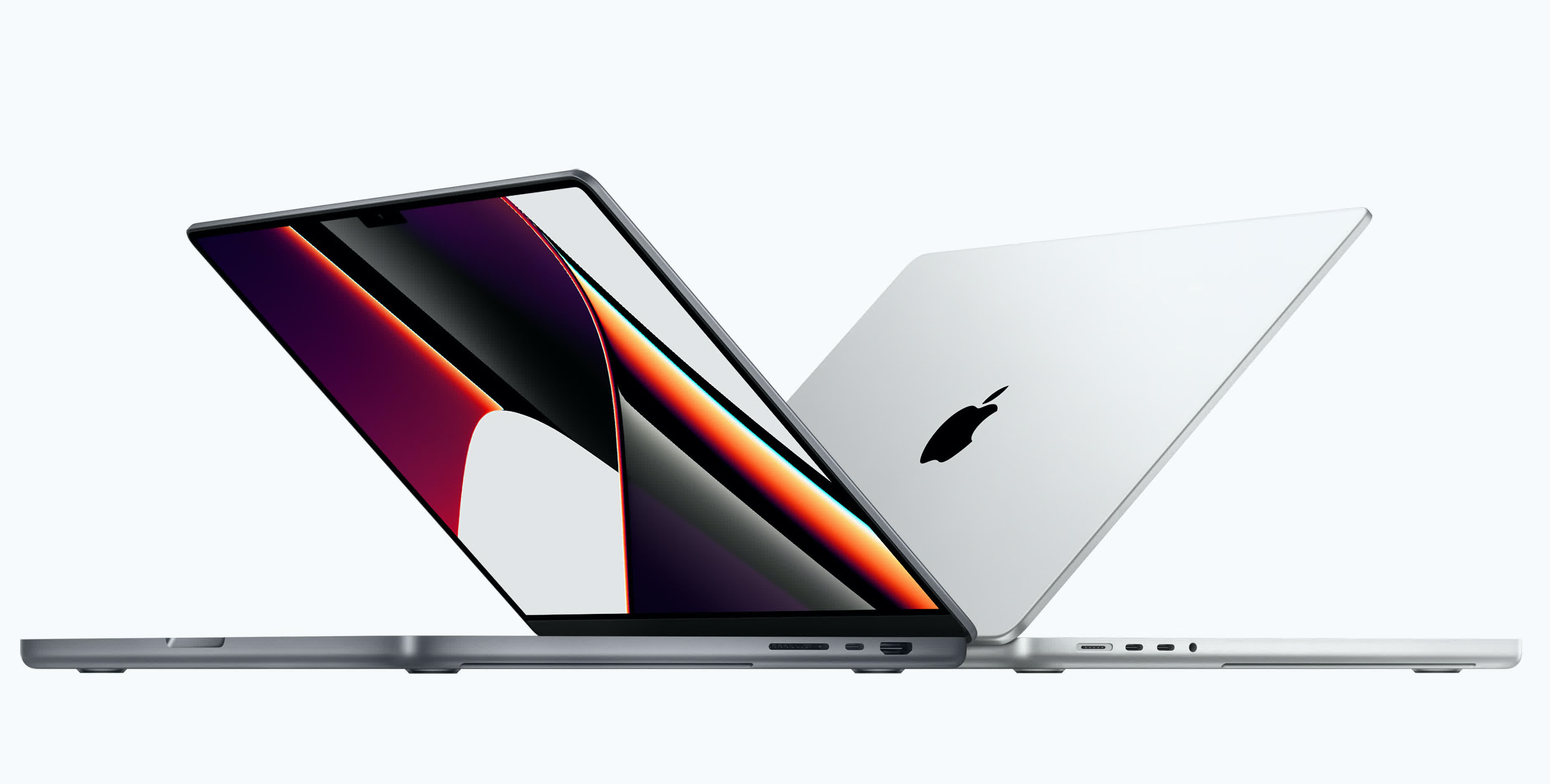
Apple’s new MacBook Pro lineup is here. As expected, it includes 14-inch and 16-inch models with much faster Apple Silicon inside. The MacBook Pros come with new aluminum enclosures that are thicker, boxier, heavier, and have slightly more raised rubber feet. Apple also stressed during the event that it mostly uses recycled materials for its products, from the aluminum needed for the case down to the tin used to solder in electronic components on the main logic board, and even the rare earth elements used in the magnets.
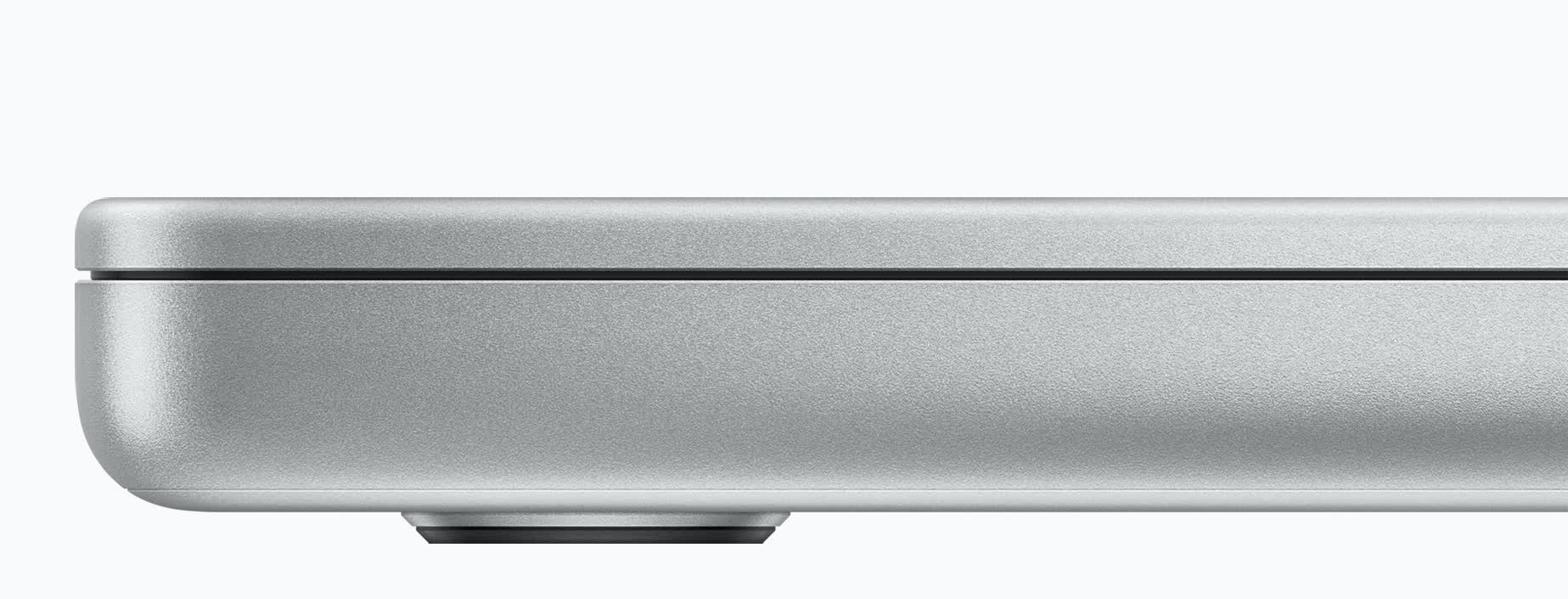
The reason for the more spacious enclosure is that Apple needed to pack more powerful internals and a more capable cooling system. The company says the new thermal design allows for 50 percent more airflow when compared to the previous generation, even when the fans are barely spinning. Speaking of fans, Apple says you’ll have to push these new MacBook Pros really hard in order to hear them at all.
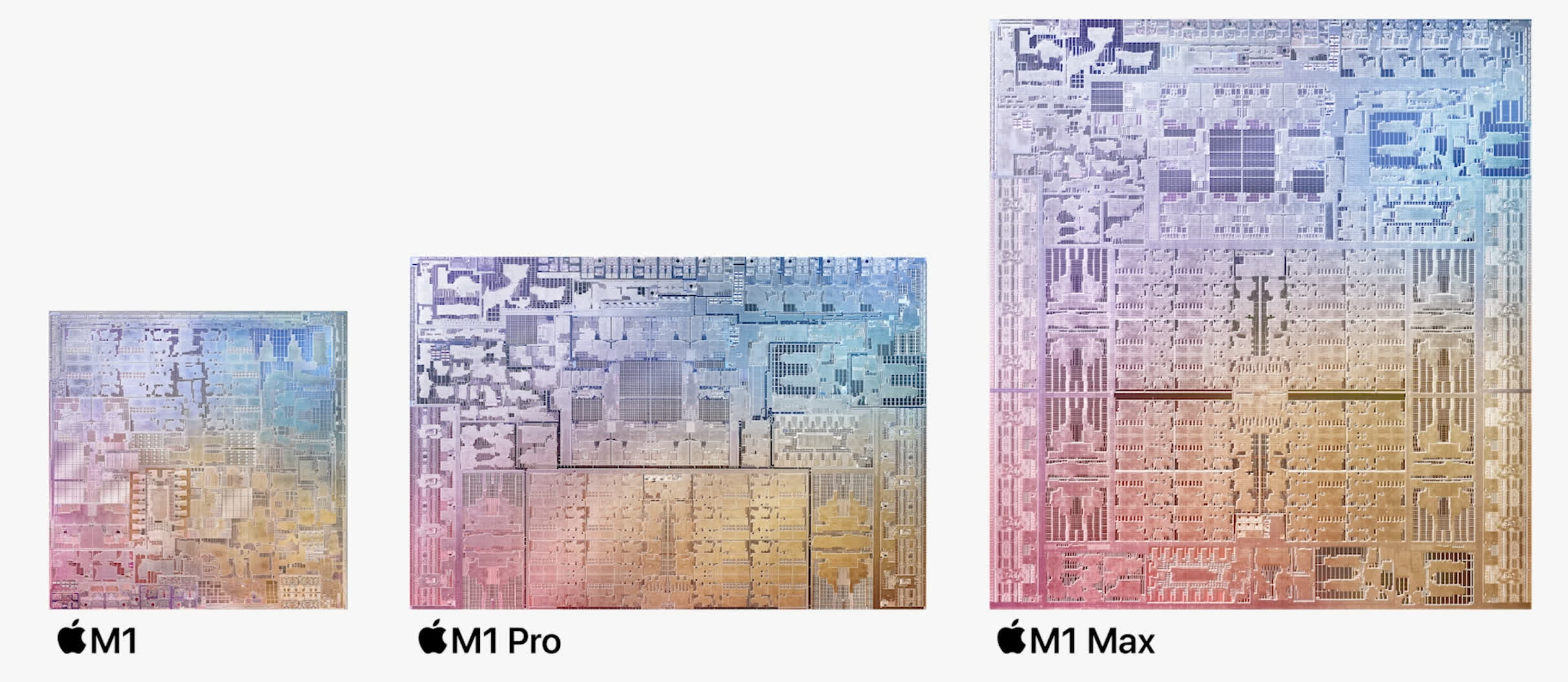
At the heart of the new 14-inch MacBook Pro is a new chipset called the M1 Pro, while the 16-inch MacBook Pro is powered by the M1 Max. Both are meant to be higher-end versions of the M1 chipset found in the MacBook Air, 13-inch MacBook Pro, iMac 24-inch, and the Mac mini. This also marks the second step in the company’s two-year transition to Apple Silicon, which leaves only the Mac Pro and iMac 27-inch.
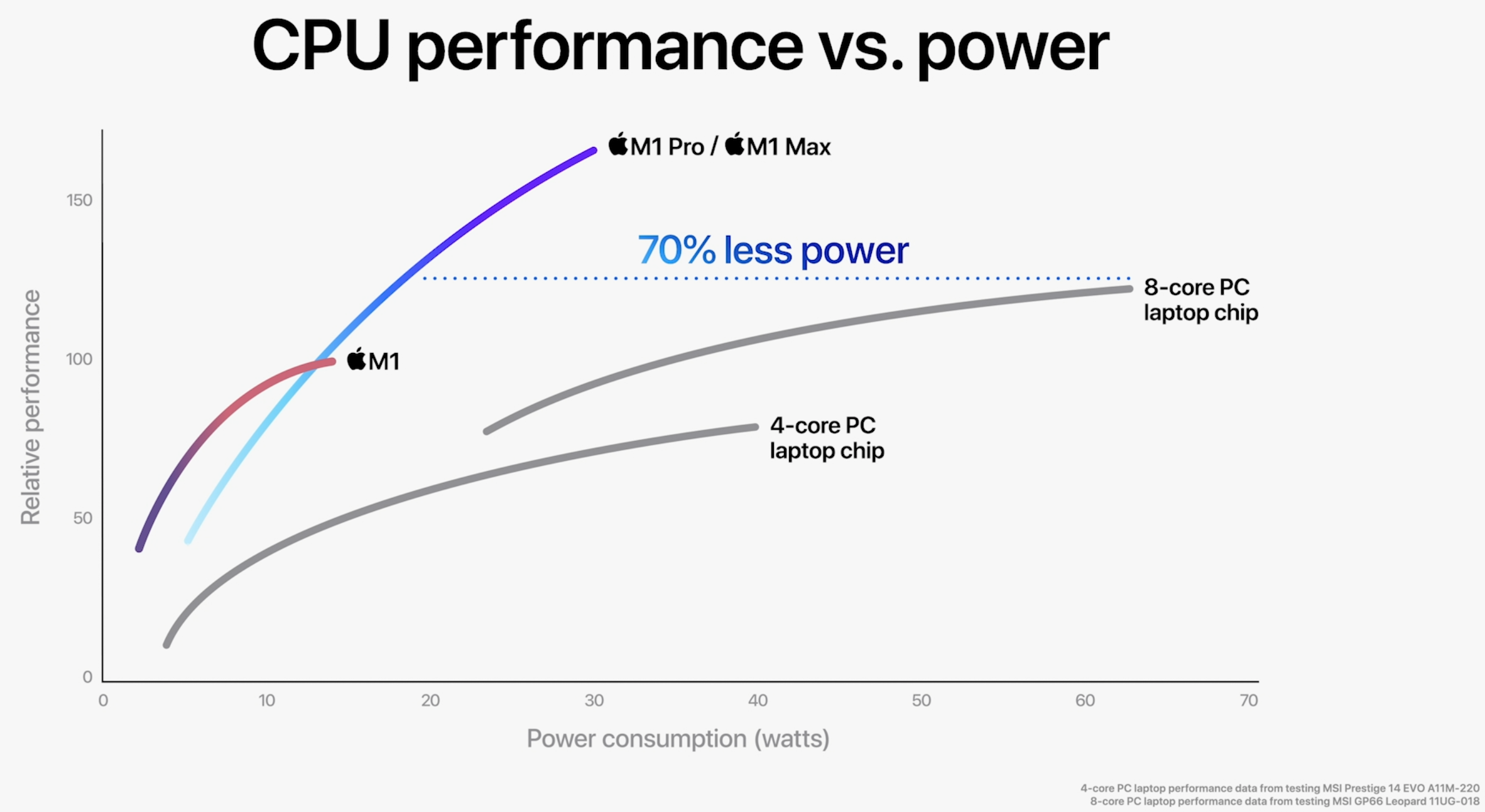
There is a lot to unpack about the new chipsets, but the rumors were on point. The CPU is the same in both chips and has eight performance cores paired with two energy-efficient ones, which together offer up to 70 percent faster performance than the CPU found in the M1 SoC.
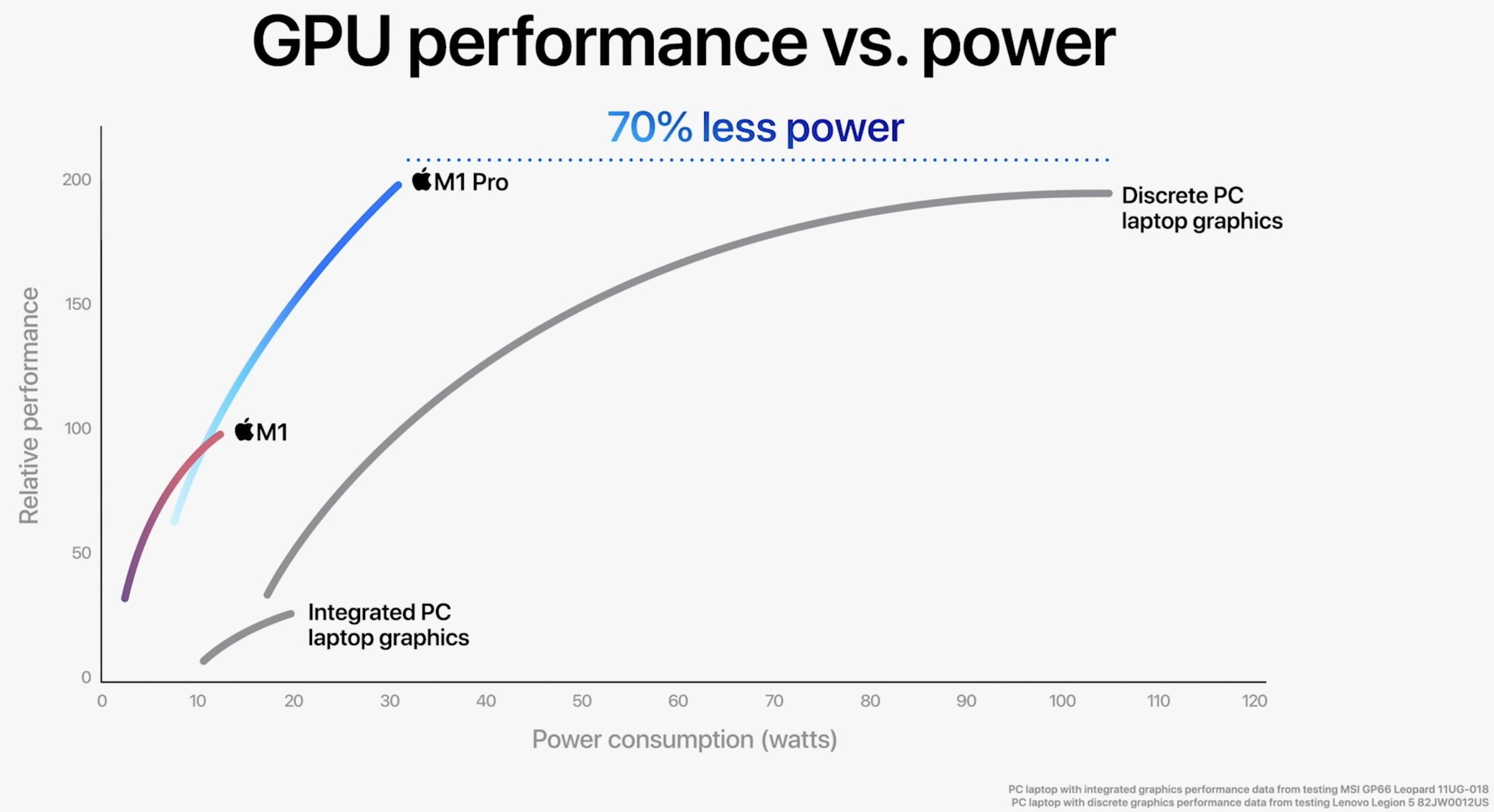
On the GPU side of things, the M1 Pro has either a 14-core or a 16-core GPU and the M1 Max has either a 24-core or a 32-core GPU. When compared to the GPU in the M1, performance is now up to two times faster with the M1 Pro and up to four times faster with the M1 Max.
But more importantly, the CPU and GPU in the new chipsets share up to 32 gigabytes (64 in the case of the M1 Max) of memory over a high speed interface that allows for up to 200 GB/s of bandwidth on the M1 Pro and up to 400 GB/s on the M1 Max. This is further augmented by a faster 16-core Neural Engine that is up to 8.7 times faster than the one found in the M1.
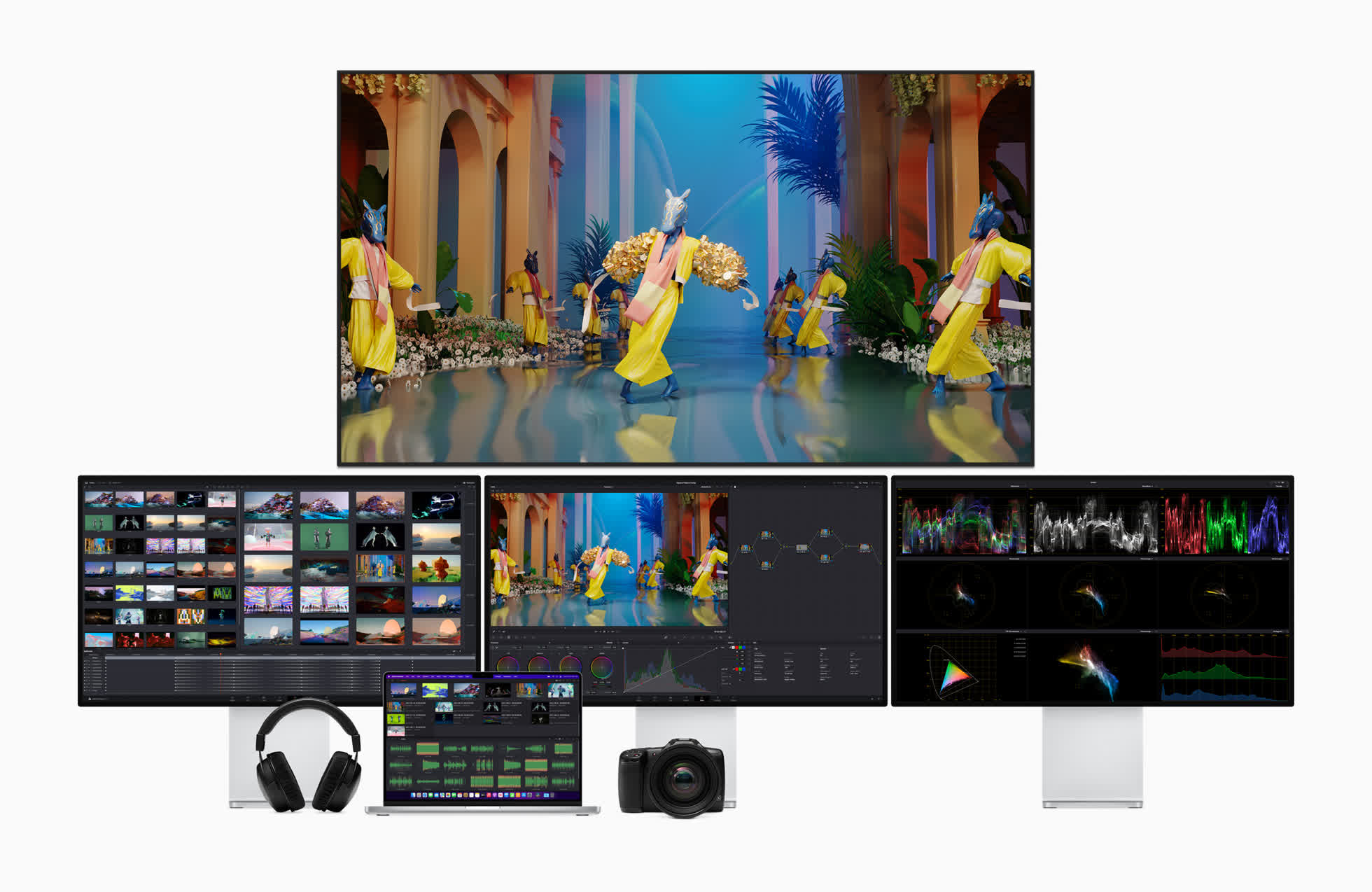
You can drive an insane setup of external monitors with the new chips. Apple also added hardware acceleration for the ProRes codec that allows professionals to edit up to 30 streams of 4K ProRes video or up to seven streams of 8K ProRes video in Final Cut Pro. The company says this along with color grading in HDR on 8K ProRes 4444 video can be done even when on battery, which would be no small feat. Developers will be able to get 3.7 times faster project builds with Xcode, and engineers will get 2.8 times faster computational fluid dynamics performance in NASA TetrUSS.
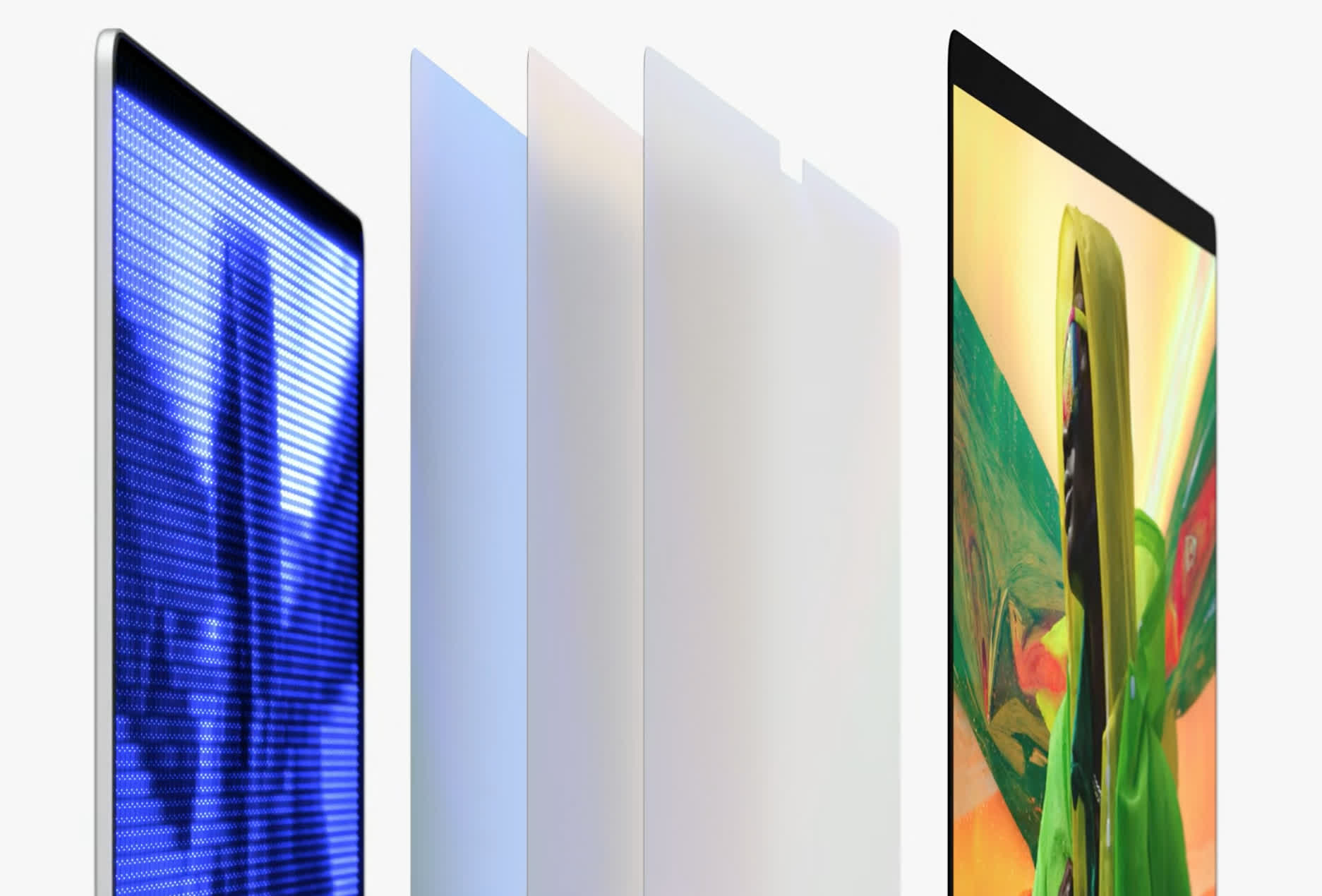
The new MacBook Pros come with higher resolution, Liquid Retina XDR displays that can deliver 1,000 nits of sustained brightness and up to 1,600 nits of peak brightness. To achieve this, Apple had to figure out how to take the Mini LED display technology it brought to the M1 iPad Pro and cram it into the thinner display frame of the new MacBook Pros. But more importantly, the new displays support ProMotion technology for an adaptive refresh rate of up to 120 Hz.
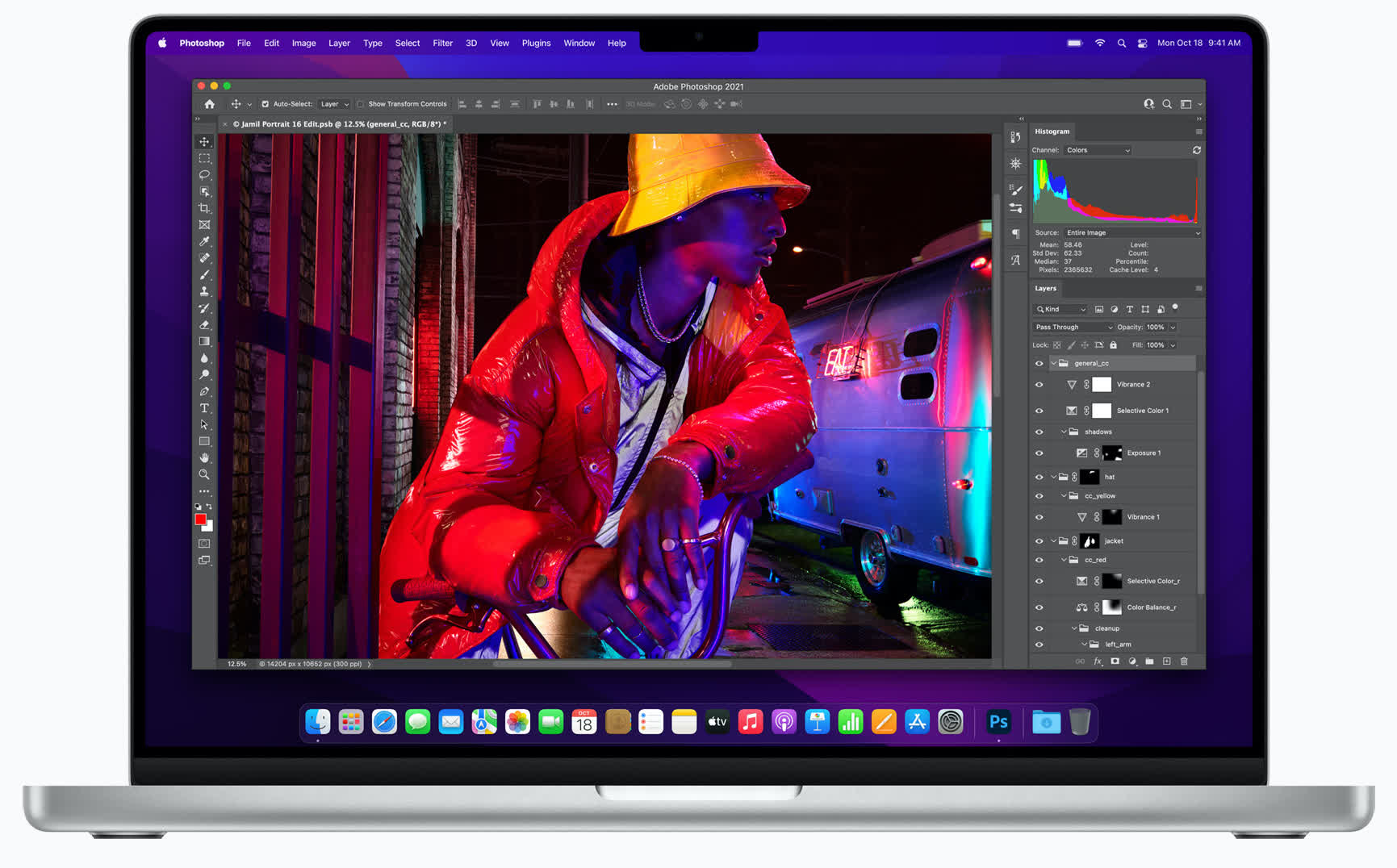
Now comes the polarizing part of the new display design — Apple wanted to make the screen larger and the bezels smaller, so it did exactly what it did with the iPhone X and newer iPhones. Both the 14-inch and the 16-inch MacBook Pro now have a notch that (finally!) houses a 1080p webcam. Some people may love the added resolution when compared to previous MacBook Pro models, but the notch seems rather large and leaves the door open to criticism that Apple didn’t bother to integrate Face ID.
The company has also integrated a six-speaker sound system that supports Dolby Atmos. Four of these are force-cancelling woofers that should deliver more bass than you’d expect from a laptop.
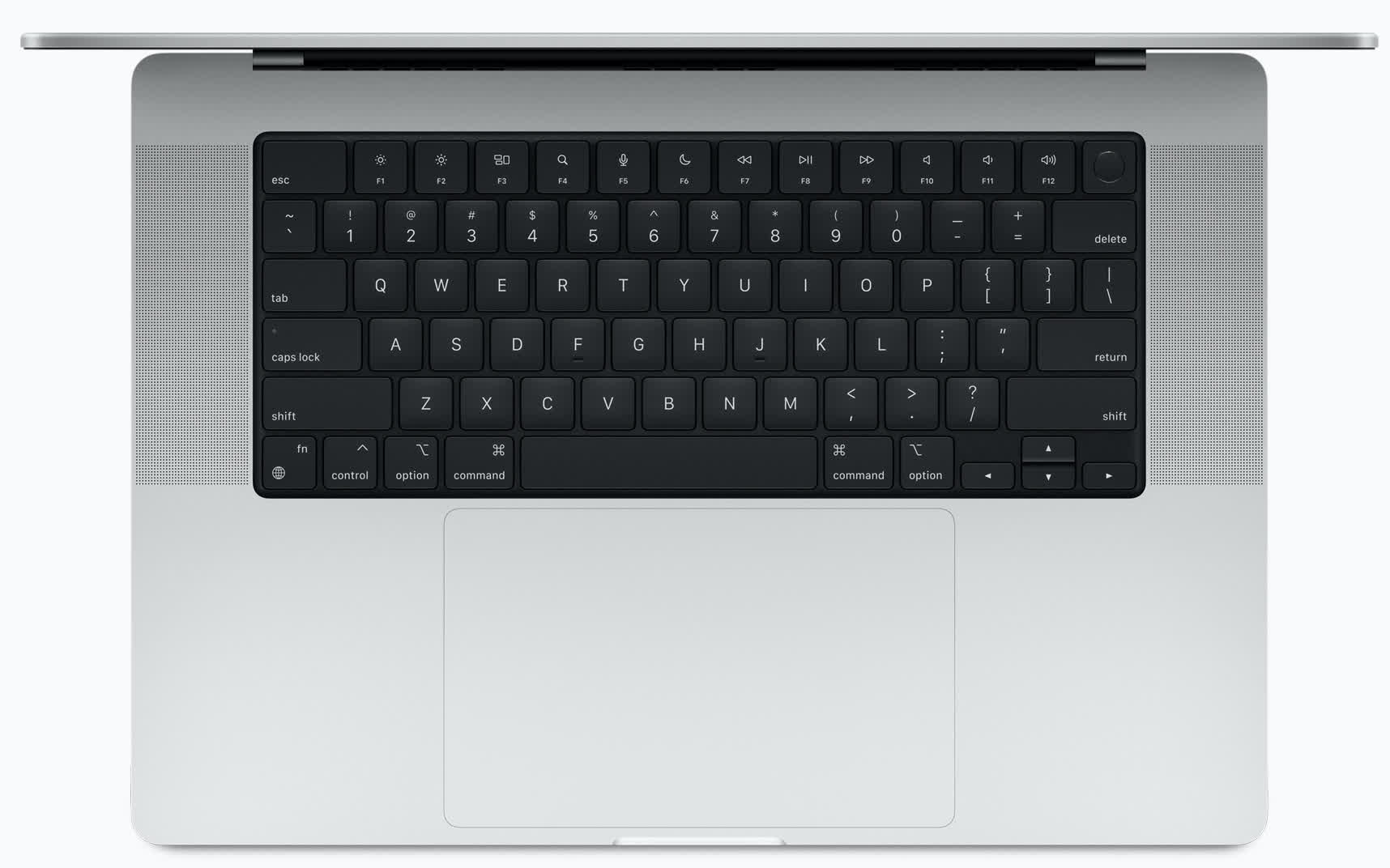
Moving on to the keyboard, Apple has removed the Touch Bar and replaced it with the standard row of Function keys that has been absent for a few generations now. There’s still a Touch ID sensor on the right, but here’s to hoping this new Magic Keyboard is easier to repair.
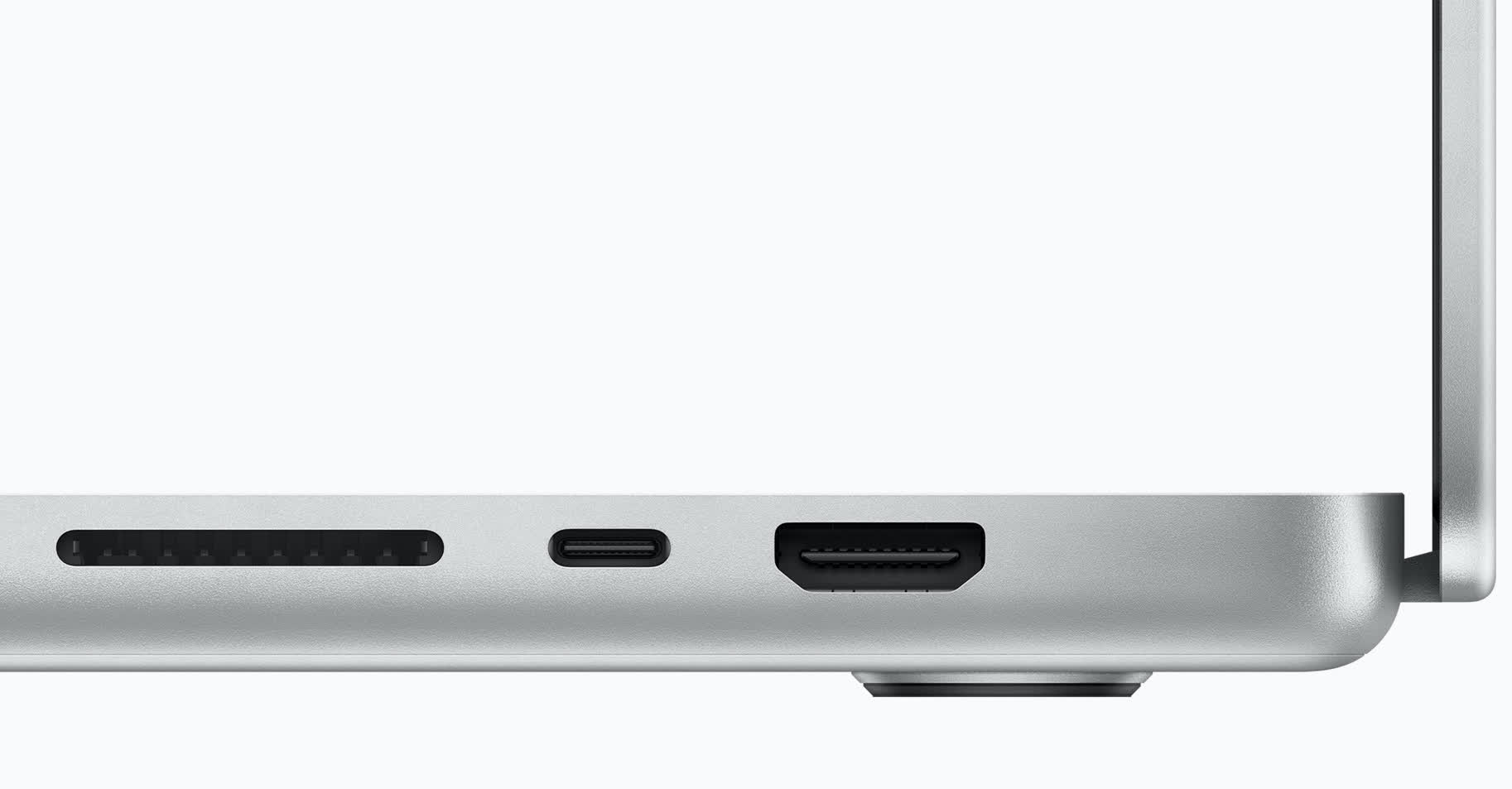
After years of heralding USB-C as the be-all and end-all of your connectivity needs, Apple has finally listened to professionals and added back the HDMI port and SD card slot. A USB-A port would have also been great, but the company has chosen to include three Thunderbolt 4 ports instead. The 2021 MacBook Pros also come with a MagSafe 3 power connector, while retaining the ability to charge over the USB-C ports.
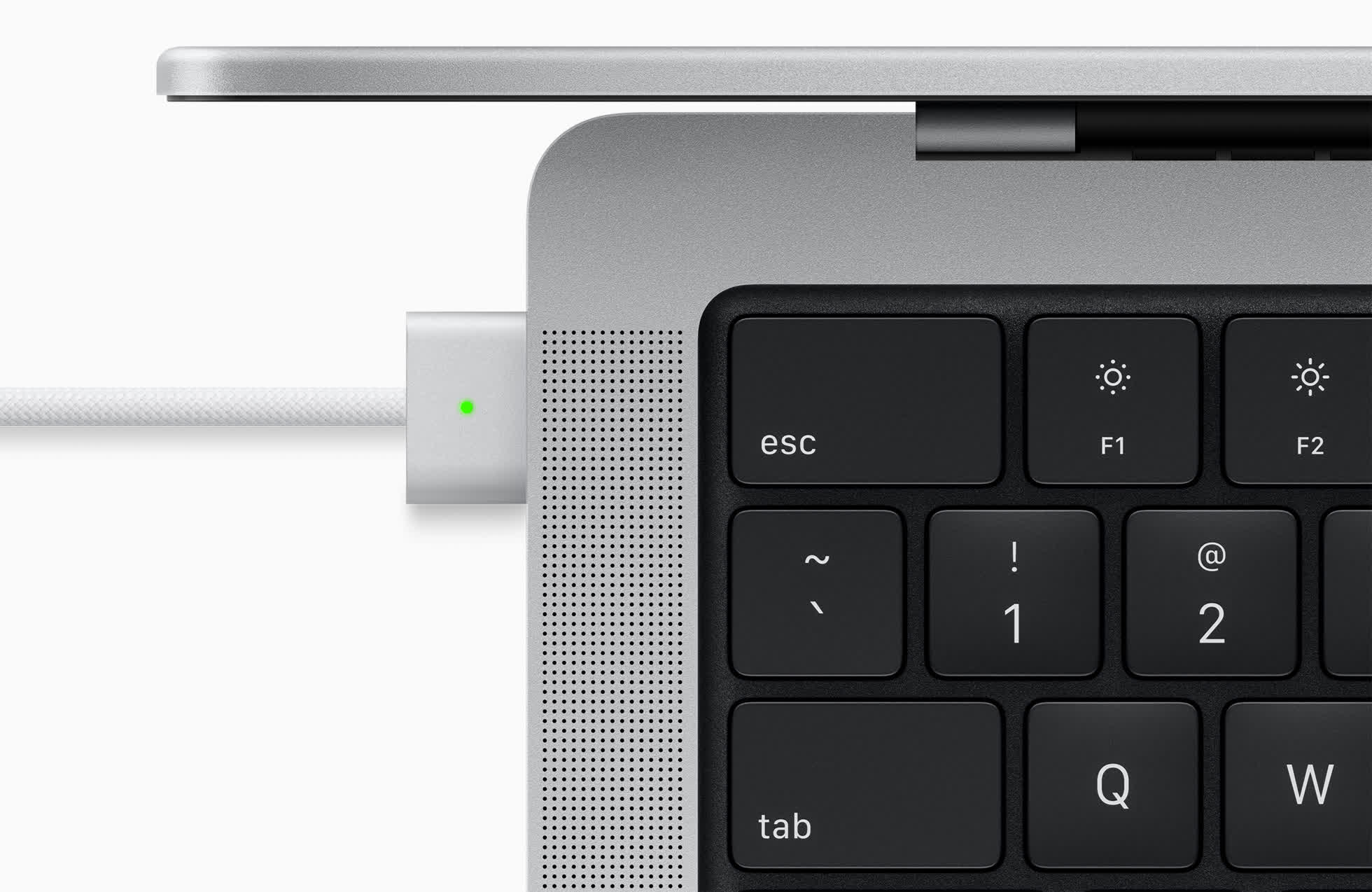
In terms of battery life, Apple says you can expect to get up to 17 hours of video playback on the 14-inch MacBook Pro and up to 21 hours on the 16-inch model, but as usual your mileage may vary depending on what you’re doing.
Pricing starts at $1,999 for the 14-inch MacBook Pro and $2,499 for the $16-inch MacBook Pro, and they’ll start shipping next week with macOS Monterey.
https://www.techspot.com/news/91806-apple-announces-new-14-inch-16-inch-macbook.html